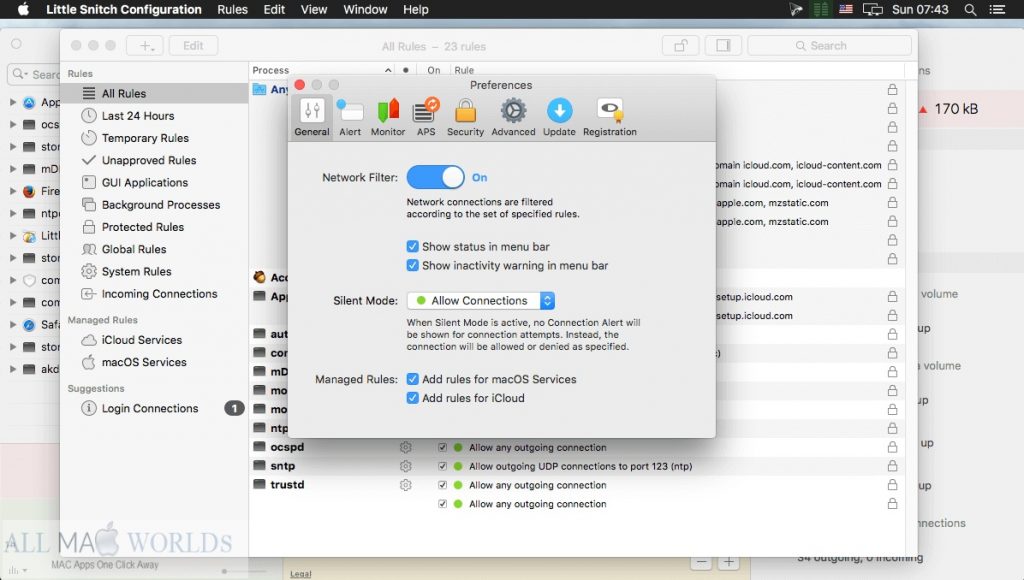

- Little snitch how to#
- Little snitch manual#
- Little snitch full#
- Little snitch software#
- Little snitch code#
You can download it from the official website or take a look at the source code on GitHub. If you don’t want to spend a dime on a firewall app, this free little alternative is really worth trying. It’s been about a week now and I haven’t encountered a bug. Just like Little Snitch, it has a panel where you can remove existing rules and add new ones manually:Įver since I upgraded to macOS Mojave, I’ve been using the new system-wide dark theme which Lulu neatly blends in with.įor a free app, Lulu is incredibly well-built. It resets when you quit the app or restart your computer and the dialogue box will pop up again. Checking the temporarily box makes the rule temporary for that specific program ID.
Little snitch manual#
Personally, I only allow Apple-signed programs to connect automatically, all third-party apps require manual confirmation to create rules.Ĭlicking the Block or Allow button determines whether the application will access the Internet or not.

The choice you make here depends on how you wish to use the program.

Lulu uses the same approach to application firewall as Little Snitch it alerts you of outgoing connections and asks you confirm every connection your apps are trying to make.Īfter installing it, you can choose to allow all default Apple apps and existing third-party apps to connect to the Internet without confirmation. If you’ve been using Little Snitch before now, you shouldn’t have a problem using Lulu. This means that it’s not just free, but also anyone can contribute to its development.
Little snitch software#
Unlike Little Snitch, Lulu is an open source software with its source code already on GitHub. If you’ve been looking for a free Little Snitch alternative that works with macOS Mojave and previous macOS versions, Lulu is what you need.
Little snitch full#
To avoid this, you have to buy the full version.

If you’re using the free version of Little Snitch, you have to deal with the fact that it automatically quits after every three hours. I’ve been using it for quite a while but recently ditched it when I found a free alternative that equally works great.
Little snitch how to#
How to check if Little Snitch was successfully uninstalled The ~ (tilde character) refers to your home folder. The configuration files are stored at the following locations /Library/Application Support/Objective Development/Little Snitch So, if you decide to reinstall Little Snitch at a later point, your rules and preferences will still be in place. Therefore, you only need the latter running for the magic to happen. Little Snitch Configuration is where you configure all the rules while Network Monitor actually does the work of filtering connections based on those rules. Your configuration data will not be deleted. Little Snitch has actually two applications running, Little Snitch Configuration and Network Monitor. IMPORTANT: Do not remove the Little Snitch app by any other means (like Terminal or some third party app-removal tool) because otherwise macOS won’t remove the Little Snitch system extension! Configuration files


 0 kommentar(er)
0 kommentar(er)
